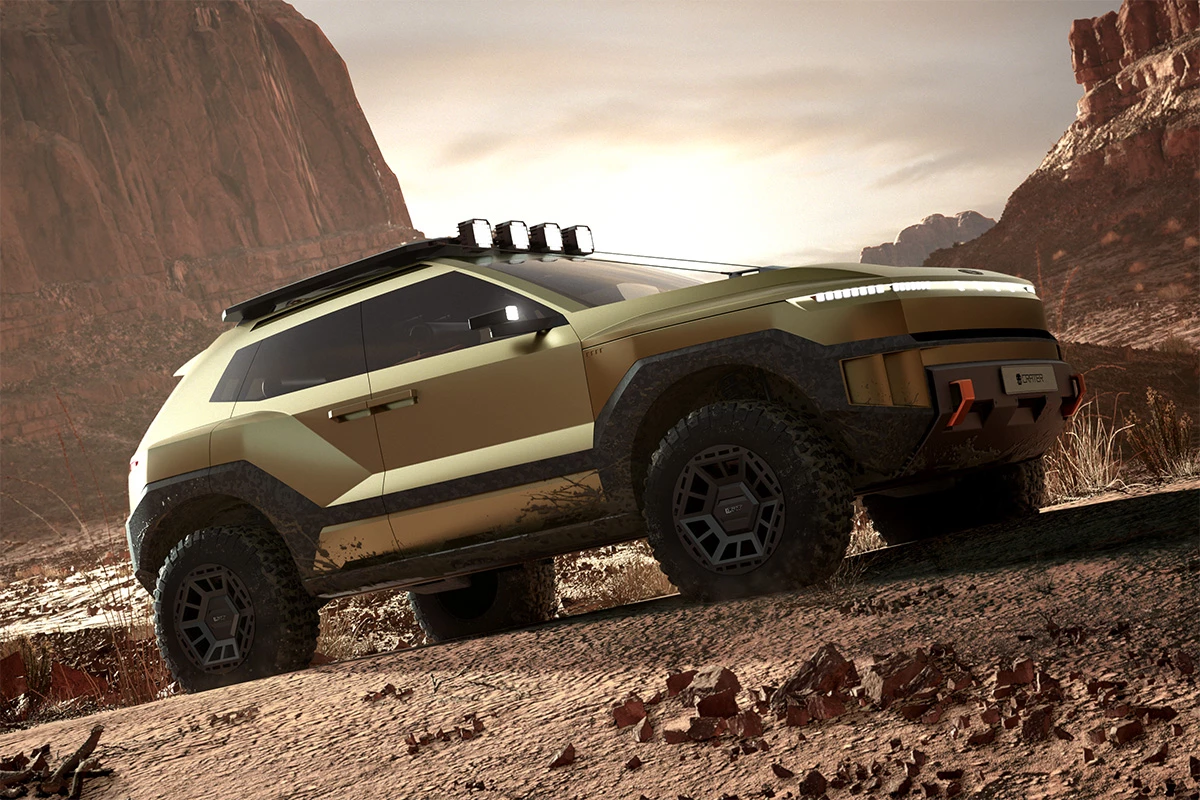I love when automakers let their designers go hog wild on concept vehicles, and Hyundai's Irvine, California-based team absolutely cooked with the Crater. It's a compact electric SUV with futuristic styling that looks like the sort of vehicle you'd deploy on a recon mission after touching down on a new planet.
The Crater's proportions, sheer fender design, and angular sculpted bodywork remind me of the Warthog from the Halo game franchise. This is likely meant to end up being smaller than a Tucson, though – and that actually might be good for its range, given its electric powertrain.
In fact, it could share its guts with the Ioniq 5, meaning it'll put out a healthy 320 hp and 446 lb.ft (605 Nm) of torque, albeit in a different state of tune than the beloved crossover for 4-wheel-drive performance. With a similar 84-kWh battery, you could look at a range of about 350 miles (570 km) on a full charge.

The Crater's bold stance is accentuated by the wide hood, headlights and taillights arranged in narrow strips, and the chunky roof rack and four search lamps. It also sits pretty high up for good ground clearance on giant 33-inch tires. And when you look closer, you'll find plenty of exciting details meant for adventures off the beaten track.

Let's start up front. There's a rugged steel skid plate with recovery hooks in bright orange. The one on the right is also a bottle opener. You'll notice a couple of cables running up to the hood – these are limb risers meant to protect the windshield from overgrown branches on forested trails.

Over on the sides, the rear view mirrors are actually cameras which can be detached to use as handheld action cams when you're out of the vehicle; on the other end, they each have flashlights. How handy is that?! It's certainly a wild idea, but I appreciate Hyundai pushing the envelope with its thinking here.

The front doors and rear-hinged rear doors can open electronically to reveal a futuristic utilitarian interior, with seats mounted on a rally car-style roll cage inside. The dashboard is a tubular mesh crash pad that emits ambient light in tandem with other illumination around the cabin, and interestingly, it doesn't house a massive touchscreen infotainment center like just about every other modern car.

Instead, it's got a series of gears you can twist to engage and adjust off-road driving settings like locking differentials and traction control. Above them are four small touchscreens that display info about the vehicle, like your 4WD modes, ramp angles, and so on.

The driver doesn't have a cluster display either; everything you need to see in the cockpit is projected onto the base of the windshield, including the view from your external mirrors. You can switch between drive modes using buttons on the steering wheel, and see the active mode on a pixelated display on the wheel too.
The seats feature a series of cylindrical cushions and a headrest that Hyundai says is designed for ergonomic comfort, and they each get four-point seatbelts to complete the rugged look. It's all black leather and Alcantara that's designed to be broken in over time, while brushed metal bits round out the cabin's aesthetic.

Hyundai isn't yet saying much about bringing this one to production, but if it can make anything remotely like it, I suspect the Korean giant will have a winner on its hands. The company's been knocking it out of the park with concept designs lately: check out the five-door Ioniq Concept 3 from a couple of months ago, and the track-focused Insteroid dreamed up by its team in Europe.
Source: Hyundai





